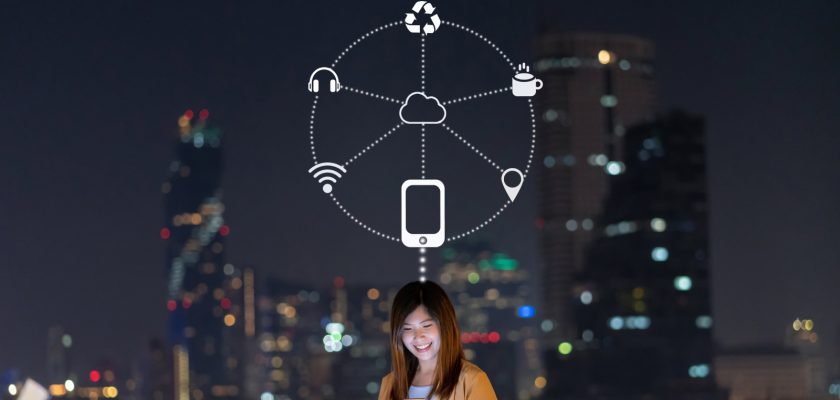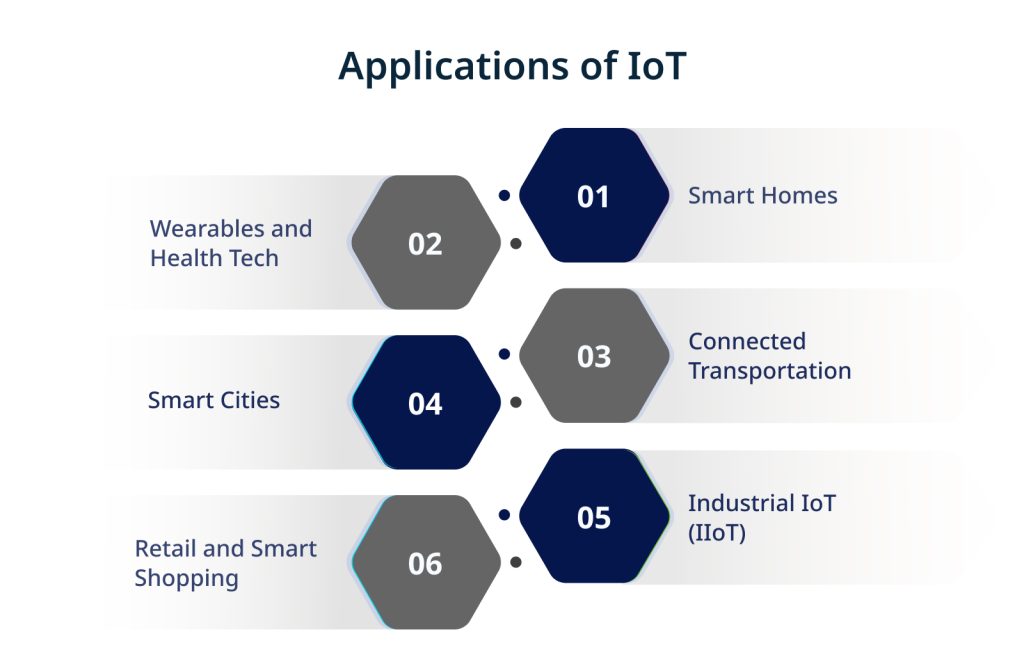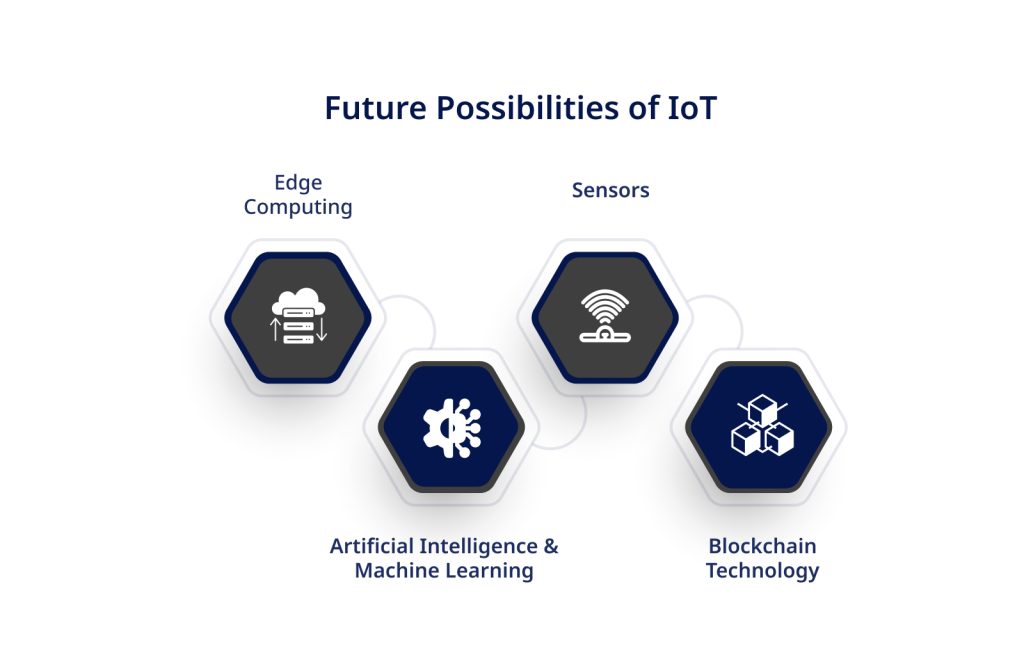Have you ever wondered how seamlessly technology has woven into our daily lives?
From smart homes to intelligent workplaces, the Internet of Things (IoT) is bringing a quiet revolution that transforms the mundane into the remarkable. As we enter into a new era of connectivity and intuitiveness, we’re experiencing a paradigm shift shaping how we live, work, and interact with the world around us.
In this post, we will explore the fascinating world of IoT, including its current applications and the endless possibilities of its future.
Current Applications of IoT in Daily Life
The Internet of Things (IoT) has become an indispensable part of our everyday lives in the emerging IoT technology, taking the commonplace and turning it into the exceptional.
Let’s explore the various uses of IoT applications for your business that change how you see and engage with the world daily.
- Smart Homes
Smart homes are leading the way in IoT integration and are transforming how we use our living areas. Homeowners may easily handle and automate various home tasks with emerging IoT technologies.
Energy-saving smart thermostats and linked security systems provide real-time monitoring and alarms. Kitchen appliances, lighting, and entertainment systems can all be coordinated for increased convenience.
Voice-activated assistants are a great way to improve smart homes’ intuitive and hands-free aspects, making life more efficient and customized.
- Wearables and Health Tech
Wearables and health technology dynamically intersect ioT and personal well-being. With the widespread use of fitness trackers, smartwatches, and health monitoring gadgets, people can track their physical activity, monitor their vital signs, and get real-time health data.
IoT in healthcare extends beyond wearables to include connected medical devices that enable remote patient monitoring and data collection.
These advancements allow people to take charge of their health and provide medical practitioners with insightful data for early detection and individualized treatment options.
Health technology and wearables are prime examples of IoT enhancing everyday life by encouraging proactive health management.
- Connected Transportation
One of the most important uses of IoT is connected transportation, which is completely changing how we travel and get around. Intelligent transportation networks are created by integrating IoT technologies with infrastructure, traffic systems, and automobiles.
When paired with sensors and communication capabilities, smart cars may talk to the surrounding infrastructure and each other. It allows for real-time traffic management, route optimization, and an improvement in overall road safety.
IoT also helps with predictive maintenance, which helps identify and fix possible car problems before they get worse.
The introduction of autonomous vehicles and real-time traffic updates via navigation applications are just two examples of how the Internet of Things is changing connected transportation and the way people commute in the future.
- Smart Cities
Smart Cities integrate technology into many facets of city life to maximize the potential of the Internet of Things. Smart cities use networked devices and sensors—from data-driven government to intelligent infrastructure—to maximize resources, boost productivity, and improve citizens’ living standards.
Smart city IoT applications include trash management systems that optimize collection routes, environmental monitoring for air and water quality, and intelligent street lighting that adapts based on real-time data.
IoT can help cities become more efficient, sustainable, and sensitive to the demands of their citizens, setting the stage for an urban environment that is technologically cutting edge.
- Industrial IoT (IIoT)
Industrial IoT, or IIoT, transforms manufacturing operations by increasing productivity and efficiency. Industrial IoT-enabled sensors and devices gather data in real-time, allowing for predictive maintenance, minimizing downtime, and increasing overall equipment efficiency.
Applications of the IIoT reach into smart industries, where interconnected machinery facilitates efficient production and resource management.
Industries use IIoT to make data-driven choices, automate procedures, and improve operational excellence through linked devices and analytics.
- Retail and Smart Shopping
IoT has completely changed the retail industry by providing cutting-edge ways to improve the shopping experience for customers.
RFID-tagged smart shelves make real-time inventory tracking possible, which lowers the likelihood of stockouts and overstocks. Customers receive tailored offers and promotions from in-store beacons and sensors depending on their location and preferences.
Furthermore, checkout procedures enabled by IoT, including cashierless systems, redefine customer convenience. Retailers can build seamless, tech-driven environments that streamline operations and meet the changing expectations of modern buyers by integrating IoT.
Future Possibilities and Emerging Trends of IoT
As we delve into future possibilities and emerging trends, we explore IoT’s transformative potential with software product engineering. We foresee a landscape where connectivity seamlessly integrates with various aspects of our lives, from healthcare to urban living.
Let’s embark on a journey into the exciting frontier of IoT applications for your business, where the promise of innovation sparks possibilities yet to be fully realized.
- Edge Computing
The shift to edge computing is one of the most important IoT trends. This involves processing data locally on the device instead of transferring data to the cloud for analysis. Enhancing privacy and security, boosting dependability, and lowering latency are all possible with edge computing.
Thus, we anticipate an increasing number of IoT devices with integrated edge computing capabilities in the upcoming years. According to a recent Gartner analysis, by 2025, 75 percent of enterprise-generated data will be produced and managed at the edge.
- Artificial Intelligence & Machine Learning
Another trend in the Internet of Things is the growing application of AI & ML to analyze data from connected devices. Artificial intelligence will be used more and more in the future.
By applying advanced analytics to the Internet of Things data, enterprises can obtain insightful knowledge that facilitates better decision-making with AI in software solutions.
For example, the future of AI is with the power of ChatGPT. Wearables and gadgets are being used in the healthcare sector to track patients’ health and spot possible problems before they get serious.
According to a report by ResearchAndMarkets, the global IoT and Artificial Intelligence upskilling market is anticipated to reach $26.79 billion by 2025, expanding at a compound annual growth rate of 29.7% between 2020 and 2025.
- Sensors
Emerging IoT technologies are increasingly utilized in agriculture and healthcare to monitor crops and increase productivity. For example, sensors can measure temperature, moisture content in the soil, and other environmental parameters that impact plant growth.
Farmers can increase crop yields and decrease waste by optimizing their irrigation and fertilization techniques through data collection and analysis.
According to a MarketsandMarkets analysis, the global smart agriculture market is anticipated to develop at a compound annual growth rate (CAGR) of 12.2% from 2020 to 2025, reaching $23.44 billion.
- Blockchain Technology
One new trend of IoT is using blockchain technology to enhance privacy and security. IoT device data can be kept in a decentralized, tamper-proof ledger utilizing blockchain technology, increasing its security and lowering its susceptibility to hackers.
By limiting data sharing to those permitted, blockchain can also aid in protecting user privacy.
According to an analysis by MarketsandMarkets, the global blockchain IoT market is anticipated to reach $3.021 billion by 2025, expanding at a compound annual growth rate (CAGR) of 93.7% between 2020 and 2025.
Final Words
IoT has a bright future, with many new applications and trends that will change industries and enhance our daily lives.
The IoT applications for your business are almost endless, ranging from blockchain and smart cities to edge computing and artificial intelligence.
You should hire IoT app developers for more fascinating advancements as it can help your company keep innovating and pushing the envelope of what is feasible.
If you are still confused, you can connect with IoT Application Development Services Companies for professional guidance and services.


